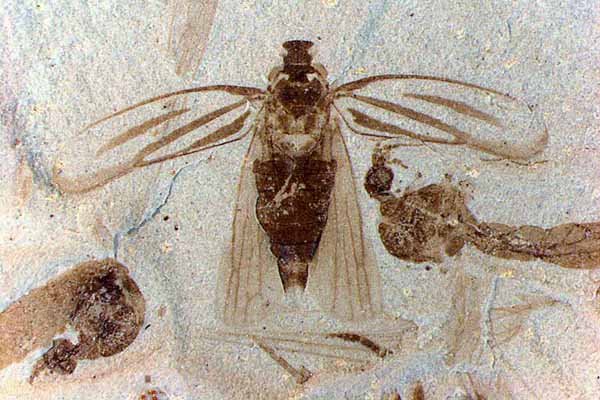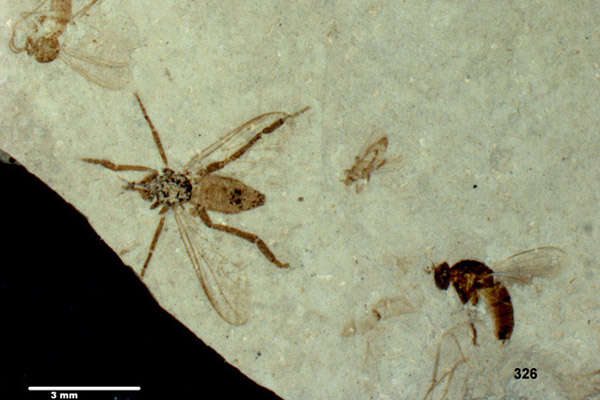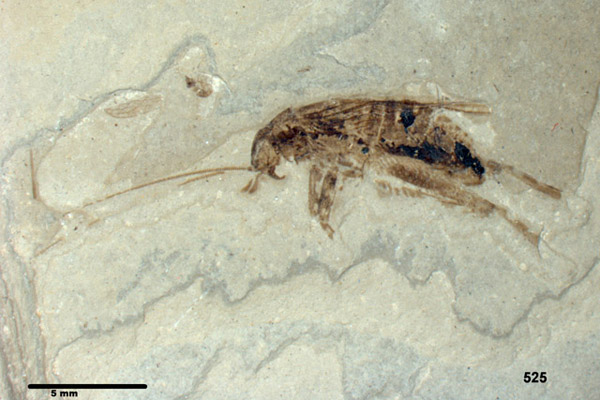Smithsonian Digs Into Extraordinary Fossil Collection

This Research in Action article was provided to LiveScience in partnership with the National Science Foundation.
This well-preserved fossilized tree hopper, flanked by two fossil crane flies, is one specimen from of an extraordinary fossil collection donated to the Smithsonian National Museum of Natural History by an amateur paleontologist between 1992 and 2003.
The collection from citizen scientist and Colorado resident David Kohls is helping scientists in the museum's Department of Paleobiology (LINK) as well as visiting researchers gain exciting new insights into insect evolution, feeding strategies and ecology. Thanks to Kohls, these scientists have access to more than 120,000 fossils preserved in lake sediments about 48 million years ago — insects, spiders, leaves, flowers and small vertebrates.
The Department's recently launched blog, Digging the Fossil Record, describes the value of the "Green River" collection:
"The insect collection features superb preservation; color differences, body hair patterns, delicate mouthpart details, eye facets and even male and female genitalia can be discerned. The insects represent 18 orders (major taxonomic groups), and, because Kohls didn't favor one type of insect over others, his collection is one of the few unbiased representations of abundant, fossil insect assemblages in the world. This makes it ideal for ecological research."
Read more about the Green River Collections at the Smithsonian and check out the fascinating new blog from the Department of Paleobiology, Digging the Fossil Record.
Editor's Note: Any opinions, findings, and conclusions or recommendations expressed in this material are those of the author and do not necessarily reflect the views of the National Science Foundation. See the Research in Action archive.
Get the world’s most fascinating discoveries delivered straight to your inbox.





